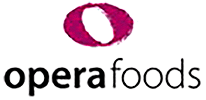Brands
Make the Switch to Low Sugar Cereal
By: admin On: 4 October 2021

Learn To Love Low Sugar Granola. Keep your eyes on the level of added sugar in commercial supermarket cereals. Since artisan granola brands like Plum Foods & Mulberry Tree showed the way, many years ago, there are still a lot of high added sugar cereal products around.
We all know that choosing a low sugar cereal is one of the best ways to enjoy a healthy breakfast. But what is sugar exactly, and why is it so bad for you?
What is sugar?
Sucrose is a sugar molecule found in all plants. Via the mechanism of photosynthesis, plants use the energy of the sun to make sucrose from carbon dioxide and water. It is the basis of all plant life.
So, all plants contain at least a little sugar. Sugar cane and sugar beet are the richest sources and we have extracted it commercially for centuries.
There are three simple sugar molecules. These are glucose, fructose, and galactose. More complex sugars are made by linking these simple sugars together. Sucrose is made from glucose and fructose. Lactose, the sugar in milk, is made up of glucose and galactose.
Most carbohydrate foods can be broken down into glucose, which is the unit of fuel for the human body. The basis of human life, if you like.
Why is sugar bad for you then?
A healthy lifestyle is consistently proved to be one based on moderation but the problems with sugar start when we eat too much. And that is really easy to do, especially when we are surrounded by overly processed foods. Sugar is everywhere, some of it more obvious than others, and breakfast cereals are one of the foods constantly under fire. See our article on Sugar content of popular cereal products.
The biggest issue around sugar consumption is weight gain caused by excess calories. Which in turn can trigger a whole host of health problems.
How much sugar should we eat per day?
The recommended daily amount for sugar is less than 10% of total calorie intake. For a diet of 2000 kcal, that's no more than 200 kcal from sugar per day. Which is roughly 50g sugar. You can already see how easily that equation fails to match up in terms of the average daily diet.
How much sugar is in breakfast cereal?
A lot of breakfast cereal is highly processed, made from refined grains, loaded with sugar and completely devoid of fibre. A sugar hit, straight to the bloodstream. But this is not limited to frosted flakes or cookie crunchies. Many breakfast cereals that are marketed as healthy, or wholegrain, are still overladen with sugar and little else. Some breakfast cereals contain as much as 40% sugar. With portion sizes above average, you can eat your daily sugar allowance before the day has even begun.
Low sugar cereals
The standard advice for eating a healthy breakfast continues to go along the lines of some cereal, some milk, and some fruit. These groups of foods continue to show up, for a number of reasons, as the best way to start your day. There are plenty of low sugar cereals out there. A good granola, for instance, will be filled with healthy wholegrains, nuts, fruit and seeds. There will be some form of sweetness in there, such as honey, which is there to bind the ingredients as much as add sweetness. Be on the lookout for premium cereals - not all so called premium muesli or granola will be a low sugar cereal.
Aim for cereals with a high fibre content of 3% or more, and less than 10g sugar. Also look for "No Added Sugar"
All of our healthy breakfast cereals are low in sugar, and packed full of the good stuff.
Natural sugar substitutes
As we have seen, when it comes to our metabolism sugar is pretty much sugar. Well, glucose. Sure, fructose and galactose are metabolised slightly different but you get the point. But the story does not end there. Natural sugar substitutes such as honey, date syrup, or coconut sugar all deliver far more nutrients than the empty calories of table sugar. Many of them taste sweeter than sugar, so less is used.
And sugar comes in different packages. As we have seen, it is present in all plants. But when you eat the plant, rather than extract the sucrose, you get everything else that goes with it. Water, fibre, vitamins and minerals. A little fat even. Fruit really is nature's sweetener.
There are a few other things that taste sweet, without delivering a dose of glucose. Vanilla is a natural sweetener that just envelops everything in a comforting hug. Cinnamon is another one.
Is honey better than sugar?
Honey has so many virtues that it does not even deserve to be compared to table sugar. In terms of calories and the effect it has on metabolism, then yes it behaves in the same way as sugar. You still need to stick within the healthy eating guidelines for sugar consumption. But do you want empty calories, like those in sugar, or do you want a dose of micronutrients along with your glucose?
Explore our range of low sugar cereals or head over to our online store where you can buy healthy cereals at bulk prices.






